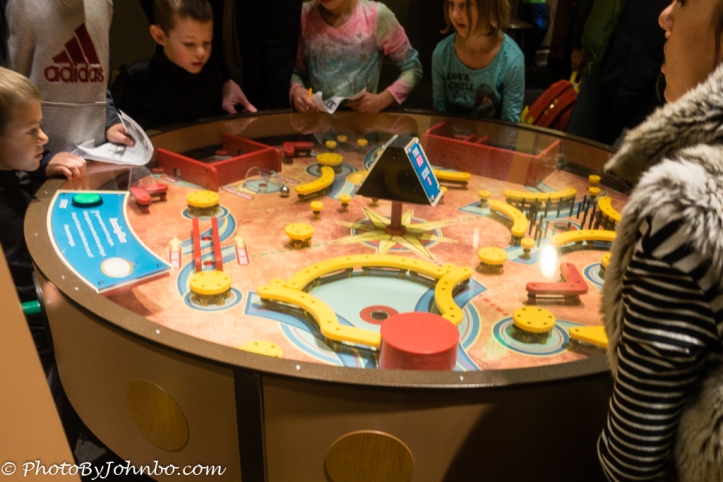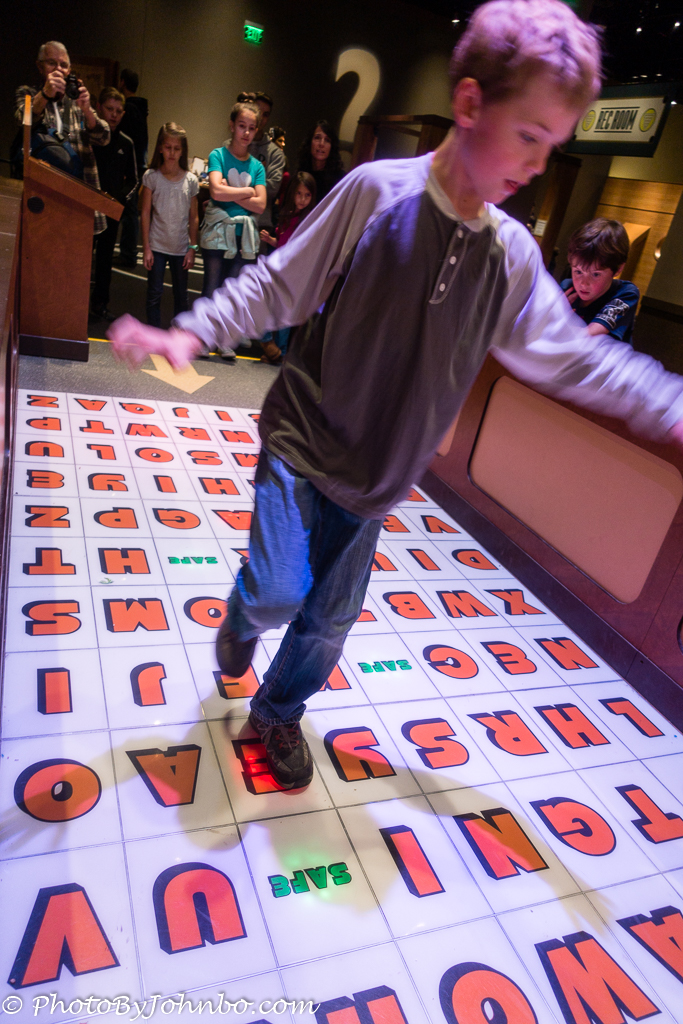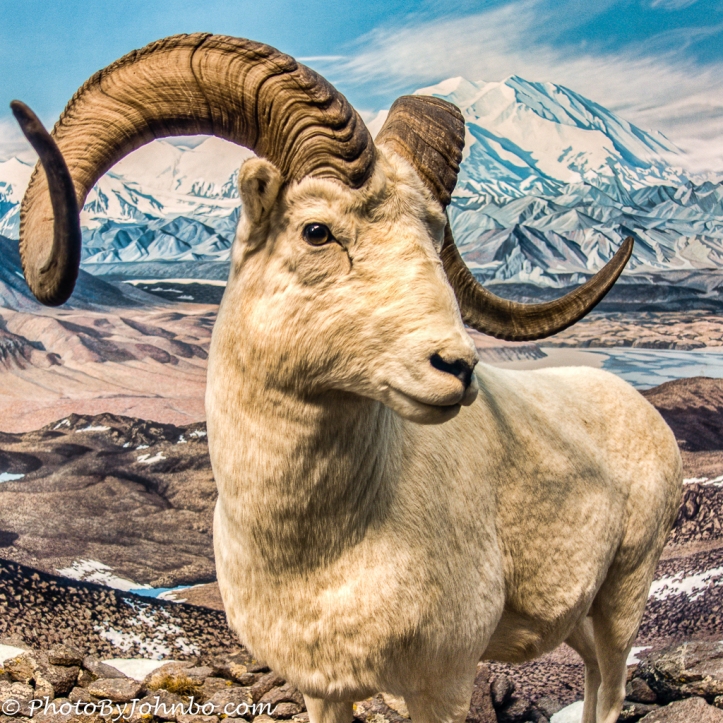On a mid-November day, Lynn and I found us visiting the Denver Museum of Nature and Science with our friend Fred Mast. There is so much to see and do at the museum, you could easily spend an entire day. We wandered the museum’s exhibit halls including presentations focusing on health, Russian gem carvings, an exhibit on the lifestyles on the island of Cuba. Our main attraction for the day, however, focused on the 89 dioramas of wildlife from around the world. The opening image features a panorama so large, I couldn’t fit it all into a multiple shot panorama without resorting to an unusual perspective view and even then, the left edge of the image cut off the complete display.
Probably what impressed me most about the dioramas is how the background almost seamlessly integrates into the foreground displays. It truly is almost just like being there. It was my challenge to create wildlife photos of these specimens gathered from all over the world. 
It would be almost too easy to pass off these images as real wildlife photography. The biggest problem that a photographer deals with is the large glass wall separating the exhibit from the visitors. Many a shot was rejected as I processed the images because I didn’t notice a reflection on the glass from a nearby exhibit or lighted hallway. Even though I watched carefully for reflections, until I saw them on the screen at home, I didn’t notice them. In a few cases, Photoshop Elements came to the rescue to remove reflections from the skies. More photos of the dioramas are in this week’s gallery and a special gallery presentation from the museum will be featured next week where I saved my best images from this visit.
One gallery I found fascinating featured the work of Vasily Konovalenko who designed several carvings using gem stones. The museum houses twenty sculptures which were purchased and donated for permanent display at the museum. This collection is the only public display of his work outside of Moscow. More sculptures are featured in the gallery below. Again, the hard part of capturing the work in photographs is having to shoot through plexiglass.
We spent some time in an interactive area where “children” of all ages enjoyed hands-on games and activities. One of my favorite games to watch featured a grid of letters on the floor where the player was shown an object on a screen and the player had to jump from letter to letter on the grid to spell the word being displayed. It was interesting to see how the player’s thought process worked as they had to reach farther than they could jump if they didn’t think ahead to the next few letters.
 The game that I spent the most time watching, however, was similar to a giant pinball machine, but unlike the traditional machine, the angle of the table wasn’t fixed. The rather heavy table is balanced on a pivot and requires a group of people to work together to tilt the table at the appropriate angle to get the steel ball to roll into the next hole. Success came only to those who could “group think” and act in accordance with the group to tilt the table appropriately.
The game that I spent the most time watching, however, was similar to a giant pinball machine, but unlike the traditional machine, the angle of the table wasn’t fixed. The rather heavy table is balanced on a pivot and requires a group of people to work together to tilt the table at the appropriate angle to get the steel ball to roll into the next hole. Success came only to those who could “group think” and act in accordance with the group to tilt the table appropriately.
There was so much to see and do there that we will no doubt be back again to see some of the stuff that we missed. Our goal this trip was to have fun “capturing” those wildlife shots that we will never have the opportunity to capture in the wild. I submit for your review a gallery of images captured in the museum. In most browsers, you can click on an image to enlarge it and to scroll through the gallery.
John Steiner





















John – thanks for these wonderful images – and how cool is it that Denver would have the Russian art for permanent display –
I know I will visit there again. It is a great place. Thanks for stopping by and commenting.
😊✋
Great indoor shots!
Thanks!
The dioramas really do the animals and their habitats justice!
They are well done, for sure. Next week we look at how they are becoming less attractive for museum attendees.
Cool sculptures! Looks like a fun place.
The animals are real taxidermy. I wondered if the animals were killed for display. I did find one interesting article on the topic here. https://www.washingtonpost.com/lifestyle/style/behind-taxidermy-display-halls-are-lots-of-donors-of-unsolicited-dead-animals/2016/12/21/6a438880-acf5-11e6-977a-1030f822fc35_story.html?noredirect=on&utm_term=.41b3618fd461